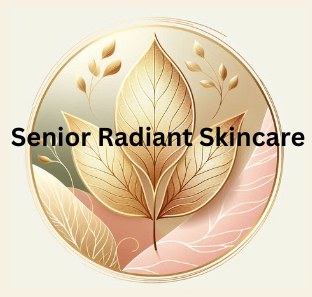Let’s kick things off by talking about retinol and why it’s been a game-changer in the realm of skincare.
Retinol, a derivative of Vitamin A, has been the buzzword in beauty products for a while, and for good reason. It’s lauded for its ability to rejuvenate the skin, but here’s a closer look at what it does.
Your skin, just like everything else, changes with time. As we age, skin becomes thinner, drier, and less elastic, leading to the dreaded wrinkles and age spots. But that’s not the end of the story. Retinol comes into the picture with promises to turn back the clock, or at least slow it down a bit.
Incorporating retinol into a mature skincare routine is about more than just following a trend. It’s about providing the skin with what it needs to combat the signs of aging. And how exactly does retinol fit into this? Well, it’s going to include stimulating the production of collagen, aiding in skin cell turnover, and improving the overall texture and tone of your skin.
You’re going to find out just how these transformative effects take place in the next section. But for now, consider retinol as a key ally in maintaining the skin’s vitality and youthfulness, something that becomes even more important as the skin matures and requires extra care.
The Transformative Effects of Retinol on Mature Skin

Have you ever looked in the mirror and wondered if those fine lines could ever fade? I’m going to tell you about how retinol can be a game-changer for mature skin. This vitamin A derivative is well known for its ability to tackle some of the most stubborn signs of skin aging.
One of the star benefits of retinol is its ability to stimulate collagen production. Collagen is the protein that gives our skin its youthful, bouncy structure. As we age, collagen production naturally slows down, leading to those telltale wrinkles. Incorporating retinol can help coax your skin back into making more collagen, reducing the appearance of wrinkles and fine lines over time.
But that’s not all. Retinol also promotes skin cell turnover. This means it helps your skin shed old cells and generate new ones, leading to a fresher and more radiant complexion. It’s like giving your skin a new lease on life, revealing the smoother, more vibrant skin that’s been hiding underneath.
For those struggling with uneven skin texture and age spots, retinol can be a boon. It evens out the complexion and lightens hyperpigmentation, which are often the results of sun damage accumulated over the years. And while retinol is doing its magic on the surface, the increased cell turnover can also help with pore size, making them appear smaller.
You don’t just have to take my word for it. Numerous studies back up these claims, and dermatologists often champion retinol as a cornerstone for anti-aging treatments. Its popularity isn’t based on hearsay; it’s grounded in solid research and countless positive outcomes in the skincare community.
Now, if you’re excited about introducing retinol into your routine, you need to know the best way to do it. I’ll guide you on choosing the right product and best practices to ensure you reap all the benefits of retinol without undue irritation. So, if you’re ready for transformative skincare, let’s move on to how you can safely add retinol to your regimen.
How to Safely Incorporate Retinol into Your Skincare Regimen
Maybe you’re convinced about retinol’s promise to rejuvenate mature skin, but how do you start? The key is incorporating it safely to avoid irritation while reaping all the benefits.
I’m going to guide you on the best practices for application.
- When starting, choose a gentle retinol cream. Look for products labeled ‘for sensitive skin’ or with low retinol concentrations. Starting with a lower dose allows your skin to acclimate to the ingredients.
- Cleanse your face, then wait for it to dry. This prevents retinol from traveling too deep into your skin, which can irritate you. Apply a pea-sized amount of retinol cream to your entire face. Yes, a little goes a long way!
- Don’t rush it. Start using retinol once or twice a week, then gradually increase the frequency as your skin adjusts. Pay attention to how your skin responds and adjust accordingly.
- Make sure to stay hydrated and wear sunscreen when using retinol. Follow up with a moisturizer to lock in hydration and use sunscreen daily since retinol can make your skin more sensitive to UV rays.
- Please bear in mind that everyone’s experience with retinol is unique to them. While some may rave about quick results, others’ skin may need more time to adjust. With patience and care, you’ll start to notice the transformation.
Don’t just take my word for it. There’s a wealth of testimonials from people who’ve made retinol a staple in their mature skin routine. They often comment on how their skin has never looked better despite initial fears of irritation or redness.
With these insights, you can step into retinol usage with confidence. But don’t forget, retinol isn’t some magical potion free from myths and misunderstandings. That’s why I’m going to shed light on common misconceptions you might encounter. Let’s tackle those, so you’re fully informed.
Myths and Facts: Dispelling Common Misconceptions About Retinol
Let’s set the record straight about retinol.
With so much information out there, it’s easy to get lost in a sea of myths. You might’ve heard that retinol ‘thins’ the skin. Actually, it’s quite the opposite. Retinol is known to thicken skin over time by boosting collagen. This is crucial because your skin naturally loses some of its density and elasticity as you age.
If you’re thinking you’re too old to start with retinol, think again. There is no ‘expiration date’ for benefiting from this ingredient. Whether you’re in your 40s, 50s, or beyond, retinol can have remarkable effects. It’s all about enhancing the skin’s natural processes that slow down with age.
Now, some folks worry retinol will do more damage than good. Remember, any powerful skincare ingredient has the potential for side effects, especially when misused. That’s why the gradual introduction and following expert guidelines are crucial. It’s about letting your skin adapt and reap the benefits without undue stress.
Always look for evidence-based advice to clear you of the myths. For every startling claim, seek out the truth. A good rule of thumb? Trust in reputable sources—dermatologists and studies published in recognized scientific journals. They are your allies in decoding the myths and harnessing the genuine advantages of retinol for your skin.
